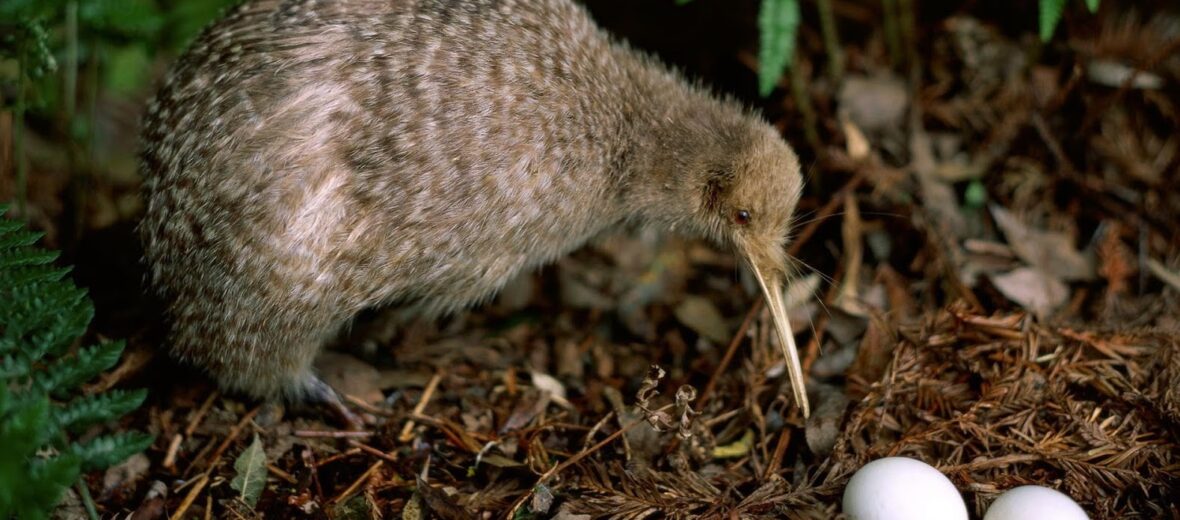
The kiwi is the smallest non flying bird. The largest being the ostrich and the emu. Kiwis are endemic (they live nowhere else) to New Zealand. Kiwis can typically be found in a variety of habitats, including farmland, pine forest, scrubland, swampland, and vegetated gullies. The IUCN lists both subspecies of kiwi as Vulnerable but their populations are stable and increasing.
First the Stats…
Scientific name: Apteryx
Weight: Up to 3 lbs.
Height: Up to 18 inches
Lifespan: Up to 20 years
Now on to the Facts!
1.) The kiwi have hair like feathers that cover up their non-functioning wings. At the tips of their wings they have cat-like claws.
2.) Considering that the kiwi has it’s nostrils located at the end of its long beak, and it uses its beak to dig through the dirt and mud for food, you can often hear kiwis making snorting sounds as they blow dirt from their noses.
3.) Kiwis are omnivores and typically look for worms, spiders, bugs, fruit, freshwater crayfish, eels, and frogs to eat.
4.) Evolving in a highly isolated environment, the kiwi has remained virtually unchanged for over 8 million years!
5.) Not having good eyesight, the kiwi can only see up to 6 feet at night and only 2 – 3 feet during the day.
But wait, there’s more on the kiwi!
6.) Kiwis are nocturnal (active at night) and almost exclusively rely on their very sensitive noses to look for food as their eyesight is so poor.
7.) Kiwis are known for having a really bad temper and aggressively defending their territory.
Did you know…?
A kiwi’s body temperature is around 100°F. This is nearly 2°F higher than humans and 2°F less than other birds.
8.) The kiwis have very strong legs that they use to dig burrows.
9.) Kiwis are monogamous (mate for life).
10.) The female kiwi lays just one egg (2 – 3 times a year), but that’s enough, as this egg is 20% of the females body size. The male will tend to the egg till it hatches, in some species. The egg takes 2.5 months to hatch!
Now a Short Kiwi Video!
Also, check out the Critter Science YouTube channel. Videos added frequently!
Want to suggest a critter for me to write about? Let me know here.



